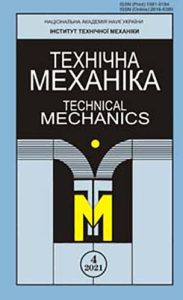Head of department – PhD., Senior Researcher Petro I. Zabolotny
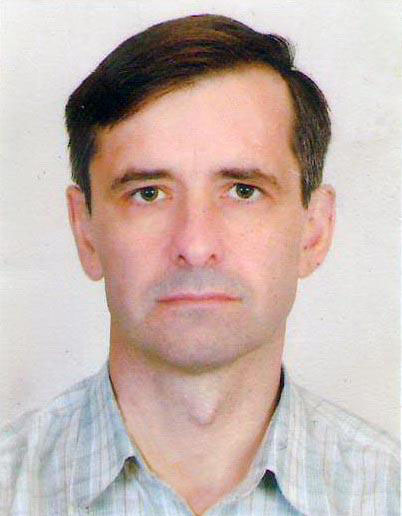
Field of research – the interaction of space charge waves and carrier flows with electromagnetic radiation; functional elements of control systems; microwave sensors for process parameter monitoring, including vibration parameters, moisture content of bulk materials; medical diagnostic and therapeutic systems; the processes of interaction of a solid body with flows of high-energy particles (atoms, molecules, atomic and molecular ions, electrons), plasma technologies for applying restorative nanostructured coatings, and ion-plasma technological devices for applying these coatings to internal and external precision working surfaces of parts of power hydraulic cylinders and other similar parts, electrical instability in spatially heterogeneous media.
An investigation has been conducted into the features of the mechanical tuning of the parameters of cylindrical and biconical resonators by the longitudinal movement of an axial rod with a conical profile. The resonator parameters have been related to the cone angle of the axial rod. The structure of the electric field in resonators is shown to be scarcely affected by the longitudinal displacement of the axial rod with a conical element. The results of dependency calculations of the resonance characteristics for the biconical resonator on parameters of the longitudinal movement of the axial rod with conical surfaces have been experimentally verified. The experimental and calculated data are shown to be in good agreement. The developed coaxial biconical resonator design can be used for local measurements of vibration parameters.
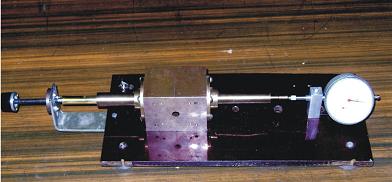
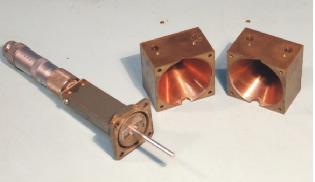
A procedure has been developed for vibration parameter measurement using a multiprobe interference meter. The procedure allows one to measure vibration amplitudes one order of magnitude greater than the length of the probing electromagnetic wave. The procedure has been verified by experiment on a laboratory model setup.

A method to determine the effective dielectric constant of two-component materials consisting of lossless dielectric materials using the waveguide measurements of the reflection coefficient. It is shown that the effective dielectric constant of the two-component lossless dielectric materials with spherical inclusions, which can be determined using the reflection coefficient is good agreement with the value of the effective dielectric constant, which is calculated using the Bruggeman formula. The obtained results make it possible to predict the dielectric properties of two-component materials, and allow us to formulate recommendations for the development of different types of primary microwave converters to control the properties of two-component materials.
Model microwave sensors have been developed to measure the moisture content of dry substances and the fraction of dry substances in liquid solutions.
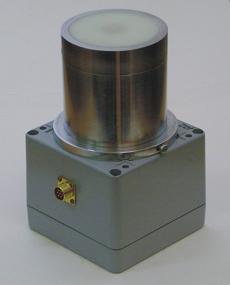
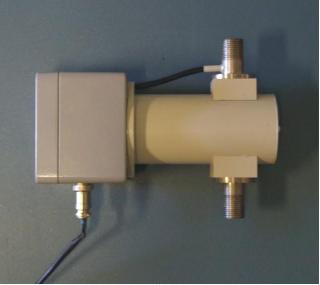
Various microwave devices have been developed for the manufacture of microwave equipment: voltage-controlled generators, amplifiers, broadband power detectors, etc.
A waveguide-integration technology has been developed for the fabrication of elements and units of millimeter-wave communication systems by multilayer electroforming. This technology makes possible elements and units with a far smaller mass and size and increased reliability, which is mainly achieved due to elimination of joints. The technology can be used in the fabrication of elements and units for satellite communication equipment.
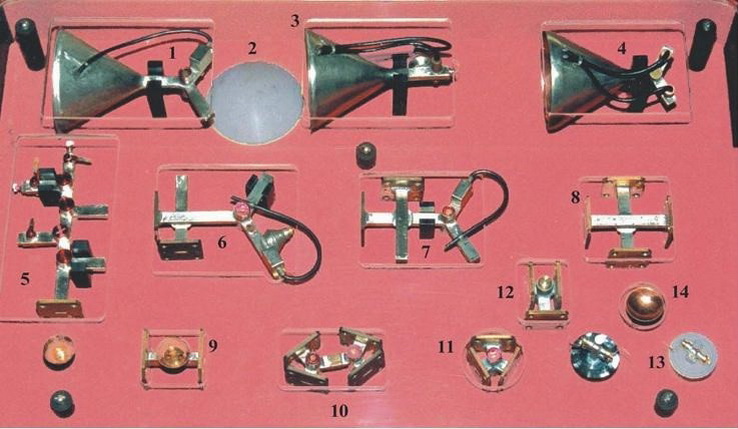
The features of current transport in thin-film GaAs-based structures due to the presence of deep centers at the interlayer boundaries have been studied. As a result of these studies: a capacitance-voltage method has been developed to determine the concentration of unfilled deep centers near the film-substrate interface, which allows rejecting semiconductor wafers prior to fabrication of devices, and the photo-specific features of GaAs thin-film structures and the physical mechanisms underlying them have been revealed. Peculiarities of photovoltage have been revealed, which made it possible to develop a capacitance-voltage method to predict the cutoff voltage of field-effect transistors with a Schottky barrier in the initial semiconductor structures before manufacturing the devices.
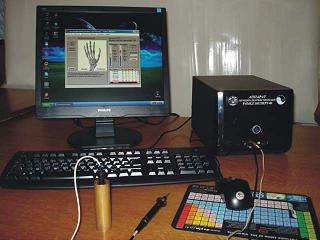

Designs of plasma technological devices for reconstructing geometric parameters and improving consumer characteristics of power hydraulic cylinder parts made of high-strength titanium alloy VT22 have been developed and experimentally tested. They are promising for implementation in the practice of aircraft engineering and surpass world analogues in a number of indicators.
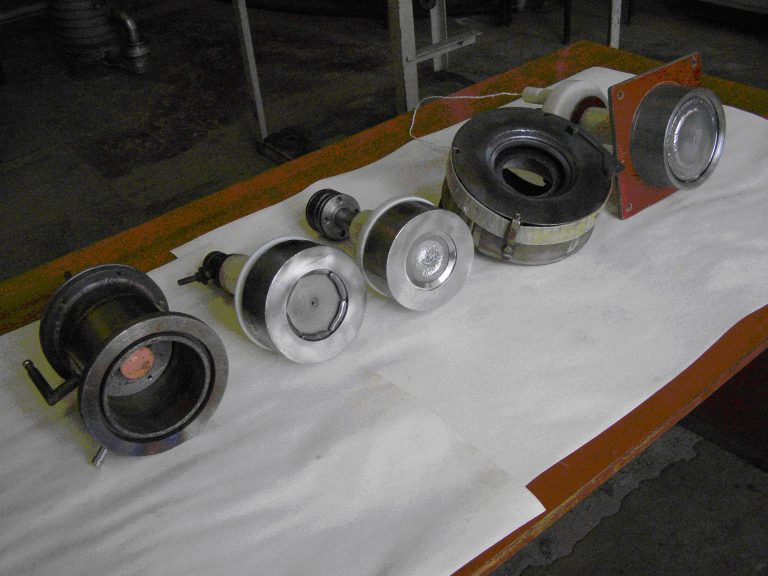
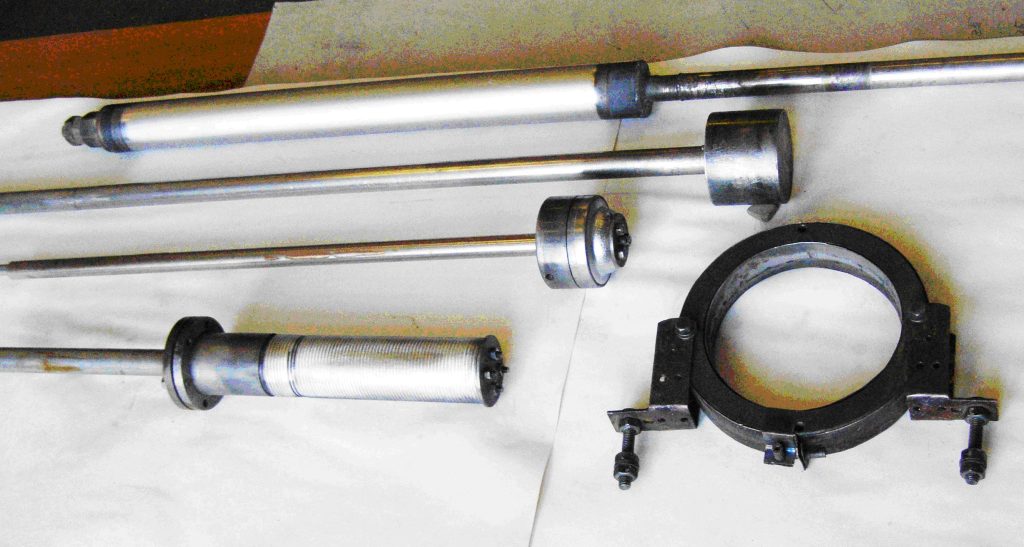
Three grants from the Soros Foundation and two projects funded by the Ukrainian Science and Technology Center have been completed in the department. One of them was made in cooperation with the research and production complex “Electronic Engineering” at Tbilisi State University.
There are links to the work of department employees in articles of authors from 27 countries in 23 journals indexed in the Scopus international scientific metric database.
Major publications:
- Pilipenko O. V. Punctural electrographic diagnostics rapid diagnosis of the functional state of the human body (Practical Guide) (in Russian) / Pilipenko O. V., Yatsunenko A.G., Grinyuk V.A., Kamkov V.P. – Dnepropetrovsk: the ITM of the NASU and NSAU, 2007. – 248 pp.
- Pilipenko O.V. Bioresonance information-puncture therapy using electromagnetic waves (Practical Guide) (in Russian) / Pilipenko O. V., Yatsunenko A. G., Grinyuk V. A., Kamkov V. P. – Dnepropetrovsk: the ITM of the NASU and NSAU, 2007. – 248 pp.
- Effect of the impact ionization of deep traps on the field distribution in planar thin-film Gaas structures / E. F. Prokhorov, J. Gonzalez-Hernandez, N. B. Gorev, I. F. Kodzhespirova, Yu. A. Kovalenko // Journal of Applied Physics. – 2001. – V. 89, № 1. – P. 327 – 331.
- Non-destructive deep trap diagnostics of epitaxial structures / N. B. Gorev, I. F. Kodzhespirova, E. N. Privalov, L. Khvedelidze, N. Khuchua, G. G. Peradze, M. S. Shur, K. Stevens // Solid-State Electronics. – 2003. – V. 47, № 9. – P. 1569 – 1575.
- Deep-level effects in GaAs microelectronics: a review / N. P. Khuchua, L. V. Khvedelidze, M. G. Tigishvili, N. B. Gorev, E. N. Privalov, I. F. Kodzhespirova // Russian Microelectronics. – 2003. – V. 32, No 5. – P. 257-274
- Photocapacitance of Gaas thin-film epitaxial structures / N. B. Gorev, I. F. Kodzhespirova, E. N. Privalov, N. Khuchua, L. Khvedelidze, M. S. Shur // Solid-State Electronics. – 2005. – V. 49, № 3. – P. 343 – 349.
- Photocapacitance of selectively doped AlGaAs/GaAs heterostructures containing deep traps / N. B. Gorev, I. F. Kodzhespirova, E. N. Privalov, N. Khuchua, L. Khvedelidze, M. S. Shur // International Journal of High Speed Electronics and Systems. -2007. – V. 17, № 1. – P. 189 – 192.
- Drobakhin O. O. Displacement sensors based on circular cylindrical microwave resonators / O. O. Drobakhin, P. I. Zabolotnyy, E. N. Privalov // Telecommunications and Radio Engineering. – 2009. – 68(17). – Р. 1577 – 1588.
- Drobakhin O. O. Resonance properties of a displacement sensor based on a cylindrical coaxial microwave resonator with a stepped inner conductor shape (in Russian) / O. O. Drobakhin, P. I. Zabolotny, E. N. Privalov // Radiophysics and Radio Astronomy. – 2009. – No. 1. – P. 104 – 110.
- Displacement measurement using a two-probe implementation of microwave interferometry / A. V. Doronin, N. B. Gorev, I. F. Kodzhespirova, E. N. Privalov // Progress in Electromagnetics Research C. – 2012. – V. 32. – P. 245 – 258.
- A way to improve the accuracy of displacement mreasurement by a two-probe implementation of microwave interferometry / A. V. Doronin, N. B. Gorev, I. F. Kodzhespirova, E. N. Privalov // Progress in Electromagnetics Research M. – 2013. – V. 30. – P. 105 – 116.
- Gorev N. B. Noniterative implementation of pressure-dependent demands using the hydraulic analysis engine of EPANET 2 / N. B. Gorev, I. F. Kodzhespirova // Water Resources Management. – 2013. – V. 27, No. 10. – P. 3623 – 3630.
- Gorev N. B. Nonunique steady states in water distribution networks with flow control valves / N. B. Gorev, I. F. Kodzhespirova, P. Sivakumar // Journal of Hydraulic Engineering. – 2016. – V. 142, No. 9. – P. 04016029-1 – 04016029-7.
- Grishkevich A.D. Development of a combined technology for hardening parts (in Russian) / A.D. Grishkevich // Technological Mechanics. – 2017 – No. 3. – P. 100 – 114.
- Grishkevich A. D. Development of plasma technological devices for the combined technology of hardening parts (in Russian) / A. D. Grishkevich, S. I. Grinyuk // Technological Mechanics. – 2017 – No. 4. – P. 96 – 111.
- Simple technique for biconical cavity eigenfrequency determination / M. V. Andreev, O. O. Drobakhin, D. Yu. Saltykov, N. B. Gorev, I. F. Kodzhespirova // Radioelectronics and Communication Systems. – 2017. – V. 60, No 12. – P. 555 -561.
- Experimental verification of a two-probe implemetration of microwave interferometry for displacement measurement / O. V. Pylypenko, N. B. Gorev, A. V. Doronin, I. F. Kodzhespirova // Technical Mechanics. – 2018 – No. 1. – P. 5 – 12.
- Gorev N. B. Discussion of “Hydraulic simulation techniques for water distribution networks to treat pressure deficient conditions” by Ho Min Lee, Do Guen Yoo, Joong Hoon Kim, and Doosun Kang / N. B. Gorev, I. F. Kodzhespirova, P. Sivakumar // Journal of Water Resources Planning and Management. – 2018. – V. 144, No. 3. – P. 07017006-1- 07017006-2.
| OFFICE ADDRESS: | Institute of Technical Mechanics , 15 Leshko-Popelya St., 49005, Dnipro, Ukraine |
| PHONE NUMBER: | +38-056-376-45-87 |
| E-MAIL: | office.itm@nas.gov.ua |

